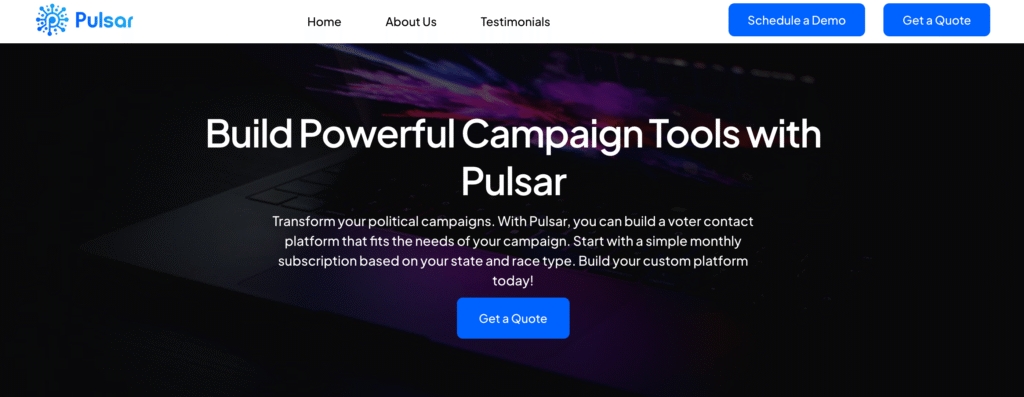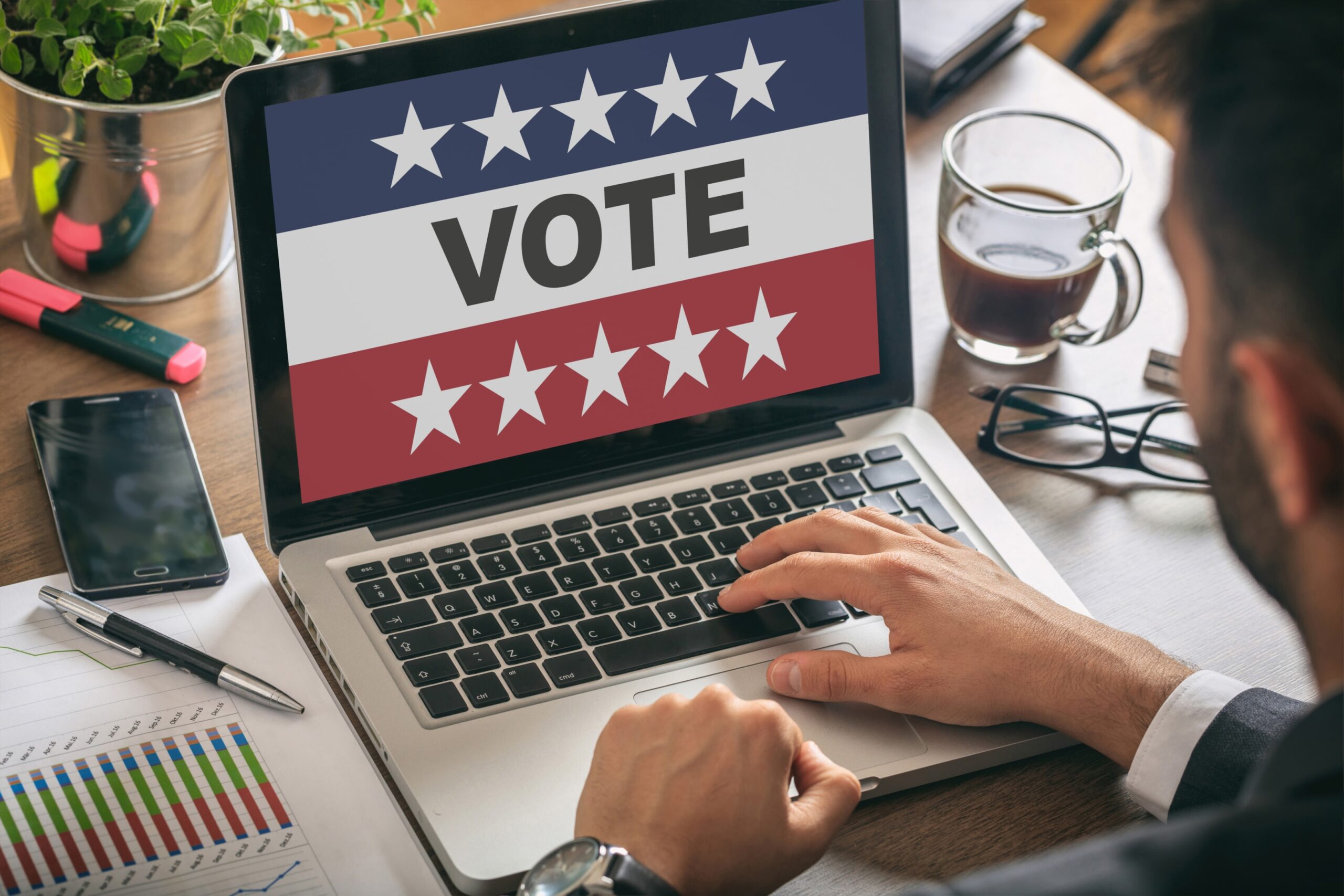Political campaigns resemble marketing, but instead of products, they focus on candidates and ideas. Winning requires structure, discipline, and planning.
Campaign management provides that foundation. It organizes staff, builds a message, and directs resources toward victory. Without it, campaigns lose time and fall behind opponents.
This guide explains how campaign management works, the roles every campaign needs, and the strategies that turn voter outreach into Election Day wins.
Key Roles of a Political Campaign Staff
A successful political campaign depends on campaign positions. Each role contributes to the plan and keeps campaign goals within reach.
- Campaign Manager: Directs the campaign strategy and oversees the entire campaign. They coordinate campaign staff and control the campaign budget.
- Finance Director: Plans fundraising events and manages campaign finance. They raise funds and ensure compliance with Federal Election Commission rules.
- Communications Director: Develops the campaign message and media strategy. They manage media interviews, guide political debates, and handle relationships with media outlets.
- Field Director: Runs voter outreach programs. They oversee voter targeting, canvassing, phone banking, and grassroots organizing.
- Volunteer Coordinator: Leads volunteer recruitment and volunteer management. They assign campaign jobs, direct voter registration drives, and prepare supporters for campaign activities.
- Campaign Treasurer: Manages financial records and reporting. They track contributions and spending throughout the election cycle.
Most campaigns rely on these campaign positions, even if some run with fewer staffers. Without these roles, opponents gain the advantage during the campaign season.
8 Strategies To Successfully Manage Political Campaigns
Every successful campaign strategy starts with a plan. The candidate must know how the campaign will present itself during the election cycle.
A strategy defines priorities, allocates resources, and guides the campaign team from planning to Election Day.
1. Define the Campaign Message
The campaign message should focus on two or three issues that reflect voter concerns in the district. This keeps the message sharp and consistent.
The communications director ensures it stays uniform across speeches, political debates, and campaign events.
Examples of strong campaign messages include:
- “Lower taxes and more jobs for working families.”
- “Protecting local communities and supporting law enforcement.”
Campaign literature, events, and the website must repeat the same themes. The target audience should hear one unified message across every channel.
2. Create a Campaign Plan and Schedule
A campaign plan organizes campaign goals and sets the pace for the campaign season. It should cover fundraising events, voter registration drives, debate preparation, and campaign activities with set deadlines.
For example, a campaign may set a goal of raising $50,000 by the end of the primary season. Another goal may be registering 2,000 new voters before Election Day.
These benchmarks keep the team accountable and give campaign professionals a trackable measure of progress.
3. Use Voter Data for Targeting
Accurate voter files guide how campaigns reach voters. Teams should request files from election offices or political parties. If needed, they can purchase data from vendors.
These files provide registration details, turnout history, and demographic breakdowns. Field directors then use this information to:
- Assign canvassing routes
- Schedule phone calls
- Plan voter registration drives
Digital advertising and digital marketing extend outreach through social media platforms and email campaigns.
These tactics ensure the target audience sees the candidate consistently across different media.
4. Execute Outreach That Reaches Voters
Direct contact remains one of the most persuasive forms of campaign work. Campaigns can use several methods to reach voters:
- Door-to-door canvassing lets voters ask questions face to face and gives staffers an opportunity to correct misinformation.
- Phone banking keeps conversations personal and reaches voters who may not attend public events.
- Grassroots organizing brings in community leaders and student groups to expand presence in neighborhoods.
Together, these methods reinforce the campaign message and increase voter engagement.
5. Track Data and Feedback
Every voter contact generates useful information. Campaign staffers should record whether a voter supports the candidate, raises concerns, or remains undecided.
For instance, if multiple voters in one district raise healthcare as a top concern, that insight should shape speeches and debate prep.
It should also influence digital strategy. Data collected during the campaign cycle creates intelligence that strengthens future campaigns.
6. Prepare for Public Scrutiny
Candidates face constant evaluation from media outlets, political consultants, and elected officials. Campaign staff must prepare answers to tough questions while keeping the candidate aligned with the campaign message.
Town halls, rallies, and community meetings should highlight the candidate’s ability to lead. They must also show respect for the democratic process.
Here’s an example: A candidate addressing student groups on the campaign trail should tie policy points to education and career opportunities.
7. Build a Media Strategy
Media coverage often defines how a candidate is perceived. The communications director should create a plan that includes interviews, press releases, and rapid responses to negative coverage.
Every story should connect back to the campaign message. If the candidate’s post is about lowering taxes, the team must ensure press coverage reinforces that theme.
This consistency should be applied across all media outlets.
8. Engage the Public
Public events remain one of the most effective ways to connect with voters. Campaign offices should schedule town halls, rallies, and community meetings that promote voter engagement.
Bringing in community leaders adds credibility. Partnering with student groups helps reach younger voters.
Each event should spread the campaign message and capture voter concerns that can guide adjustments in the campaign strategy.
How to Turn Strategy Into Votes on Election Day
Election Day is where a campaign proves whether its preparation pays off. Even the strongest campaign strategy will fail if supporters don’t vote.
A disciplined Get Out the Vote (GOTV) plan turns campaign work into ballots.
Build a GOTV Plan Early
Preparation must start well before Election Day. A complete plan includes a verified supporter list and defined roles for campaign staff. It also provides transportation options for voters with access issues.
Campaign staff must use a system that tracks turnout as the day unfolds. These steps keep the campaign office organized and focused during the busiest hours of the campaign season.
Proven GOTV Tactics
Campaign staffers use targeted methods to drive turnout. Early voting programs secure ballots ahead of time and reduce Election Day pressure.
Senior voter initiatives provide transportation and absentee ballot support. Community leaders often help reach voters who might otherwise stay home. Student groups raise youth participation through campus outreach.
Each tactic connects back to the campaign message and increases voter engagement when it counts most.
Monitor Turnout Throughout the Day
Election Day requires active oversight. Campaign professionals should track turnout in each precinct and respond when numbers lag.
If a district shows weak participation by mid-afternoon, field directors should redirect teams to that area. Quick adjustments can decide close congressional campaigns or local races where margins are razor-thin.
A well-executed GOTV plan can decide the outcome of a successful political campaign. With preparation, coordination, and disciplined execution, campaign staff turn months of planning into decisive results.
Technology and Tools for Campaign Management
Campaign management requires discipline. A campaign manager should oversee voter outreach, coordinate campaign staff, and manage data without delays. Outdated methods weaken campaign strategy.
Pulsar provides reliable tools for voter targeting and communication. Campaigns can organize outreach, monitor engagement, and adjust strategies using feedback from every voter contact.
With Pulsar, campaigns can:
- Access preloaded voter files for precise voter targeting
- Assign and track canvassing routes and phone banking shifts
- Schedule campaign events tied to fundraising goals and voter outreach milestones
- Track voter contact results and engagement as they happen
- Keep field and volunteer work aligned with campaign goals and media activity
Without this structure, campaigns risk losing voter support. In a competitive electoral process, coordination often determines whether a candidate advances or falls short.
Turn Campaign Strategy Into Victory With Pulsar

Campaigns win when structure, discipline, and data work together. National committees such as the National Republican Senatorial Committee invest heavily in these systems. Your campaign deserves the same level of preparation.
Pulsar has powered more than 120,000 campaigns and helped reach over 100 million voters. It has supported federal candidates in primary elections and driven presidential campaign efforts across the country.
When a candidate loses, the problem is rarely the message. Most failures come from disorganized campaign work and missed voter outreach.
Pulsar provides the tools to manage voter contact and communication. Its texting features help campaigns reach supporters who drive fundraising and volunteer efforts.
That unity produces a winning campaign that speaks with one voice across the campaign website, field operations, and every public appearance.
Built by Republican operatives with decades of experience, Pulsar gives your campaign the same tools trusted in tough races nationwide.
Schedule a demo or get a quote and put Pulsar to work for your next campaign!
FAQs About Political Campaign Management
What does a campaign manager do in a political campaign?
A campaign manager leads the entire operation. They guide many campaign staffers, manage the budget, and direct voter outreach. They also keep the campaign message consistent from start to finish.
How do you create a successful campaign strategy?
A successful campaign strategy begins with defining the message and setting priorities. It also includes a calendar that ties fundraising events, voter outreach, and campaign activities to deadlines such as primary elections.
What campaign staff positions are most important?
Key positions include the campaign manager, finance director, communications director, field director, treasurer, and volunteer coordinator.
These roles coordinate many campaign staffers and keep the campaign organized and disciplined.




